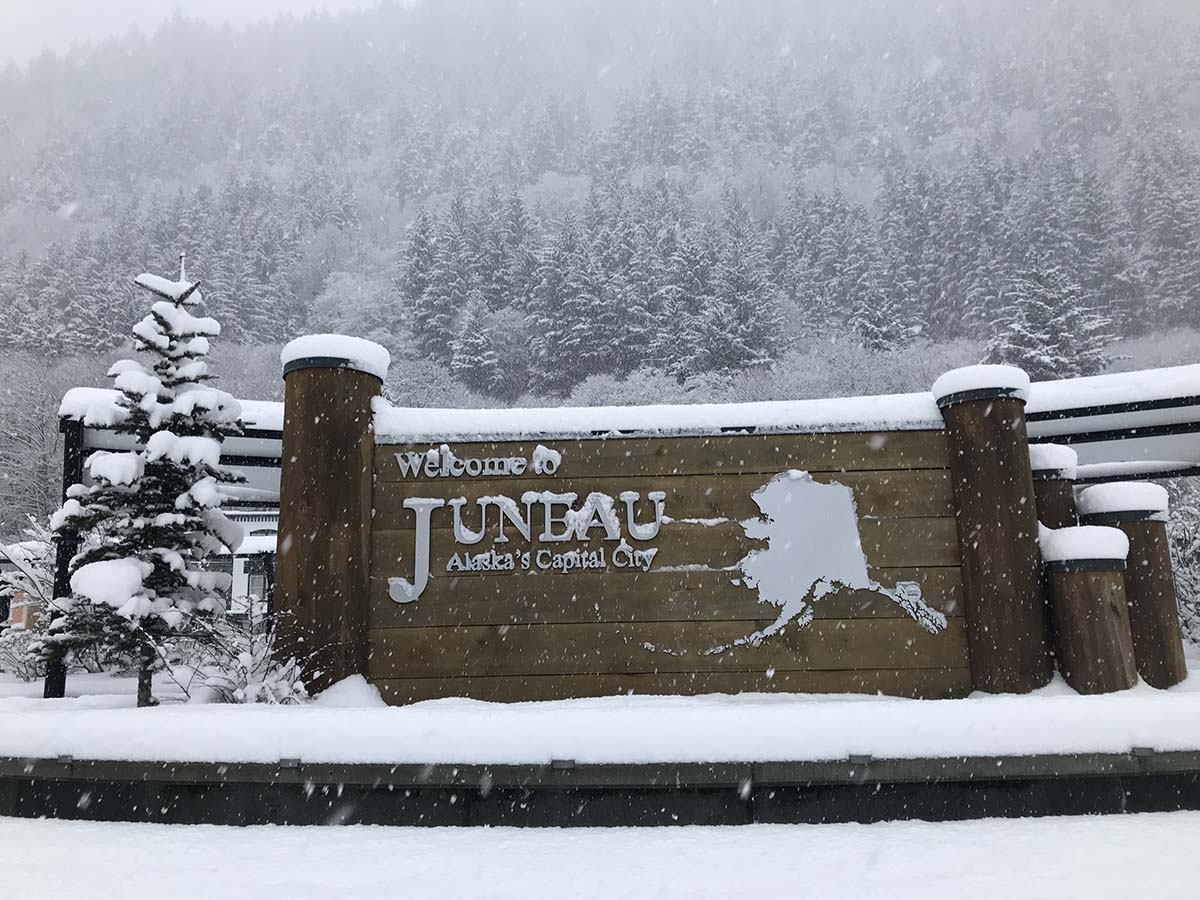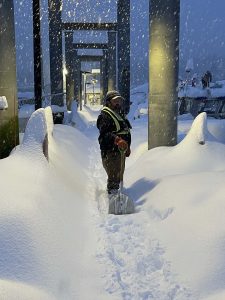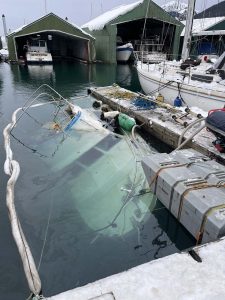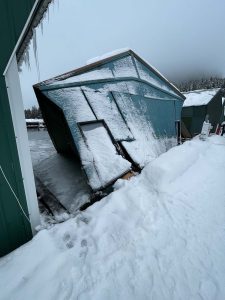
Marina Prep for an Alaska Winter
Published on August 14, 2025This time of year, marinas in many areas of the country are beginning to switch over from summer boating season to off-season operations—boats may be pulled and stored, bubbler systems tested and deployed and winter projects planned. For the City and Borough of Juneau Docks & Harbors, Alaska, winterization operations look a bit different.
The facilities include three small boat harbors that house close to 2,000 slips with amenities such as launch ramps, pumpout, shore power and fresh water. The marinas cater to both recreational and commercial boaters and are home to close to 50 year-round liveaboards. Angela Thrower, harbor operations supervisor, said where other marinas cater predominantly to pleasure boaters on a seasonal basis, the port must accommodate vessels and commerce throughout the year. “While we do have high recreation and tourism in the summer, the need to provide services doesn’t change when summer is over,” she said.
Slips Remain Occupied
Juneau’s primary recreational boating season runs May through September, much like facilities throughout the country. However, where others begin hauling out boats, the port’s marinas only pull about 30% of the boats. The unoccupied slips are then used throughout the winter to accommodate transients who come down from the more northern regions of Alaska and Canada.

Boats can remain in the slips because the harbors are not impacted by sea ice. Consequently, boats don’t get iced in and crushed as may happen in hard freezes in other waters. Thrower said they do get issues with through-hull fittings freezing, cracking and leaking, causing boats to take on water. The staff walk the docks daily to look for any listing or other changes in the boats. If issues are spotted, the boat owners are contacted.
Thrower said it is not their job to caretake, and their contracts put much of the burden for boat care and safety on the owners. Most vessels are required to do their own maintenance and if they stay in the harbor, the marina requests an alternate contact as well as a snow removal plan. They also check the seaworthiness of all their vessels.
“Ideally, we check sea worthiness three times a year, but realistically, it only happens once,” Thrower said. “Any vessel that has been in the marina for more than 300 days is reviewed and the owner must take it out of the slip to demonstrate maneuverability. We’re really looking to make sure if there’s a fire, the boat could move out of the slip and into the harbor.”
Although the marinas expect owners to oversee the care of the vessel, Thrower explained she and her staff still do everything they can to make sure boaters are safe. “The winter of 2023-2024 was our snowiest with 120 inches of snow,” she said. “Nine boats sank in the harbor, but we had saved dozens of others.”

Having liveaboards prevalent in the marina adds some additional safety responsibilities. Operationally, liveaboards are required to register, pay an additional fee and pay their electric bill to the power company, which sets up meters directly to the boat’s power source. Additionally, at the time they register, Thrower said liveaboards are given detailed information on maritime and winter safety.
“Many think it’s going to be like living in an RV park, but it’s very different. We give them safety and educational resources, and we check on them frequently,” Thrower said. “They must be aware of the risk of power outages from landslides or winter storms that can last several days. We hope they can relocate, but for those who can’t, we work with our community entities to find temporary housing or shelter.”
The harbors attract a significant number of liveaboards in part due to the lack of available housing in the area. Despite their numbers, liveaboards have limited amenities available at the port with small and aging restroom and shower facilities. Thrower said there are plans to make improvements, and one harbor has newer facilities, but they are waiting on funding to renovate the others. That means keeping the power on and water flowing to the docks are priorities.
Winter Operations
July and August are the height of winterization preparations for Thrower. She spends these months identifying and reporting lapsed storage items, abandoned boats and miscellaneous things that have been left behind as it takes 51 days to go through the process from impounding to destruction.
“Vehicles, nets, gear, vessels, I want all those things out of the way before winter,” she said. “We have a lot of snow removal, and we don’t need to worry about hitting any dumped stuff.”

Opposite removal, Thrower is also looking at what needs to be added, renovated, or repaired before the area freezes. She starts calling in contractors for larger repairs. The staff ensures the snowplow and sander vehicles are ready for the season and service the snow blowers. Plows are put on the work trucks in October so they’re ready for plowing that generally is needed starting in mid-November.
“It’s different in the winter. Safety is our top priority. We make sure staff have appropriate gear for the winter conditions. We do a winter safety refresher on gear and hypothermia signs, etc.,” Thrower said. “We spend a lot of the winter keeping the gangways and facilities clear of ice so patrons and staff can continue to move through the area safely.” Her dedicated harbor dock staff of just eight, also plan for how to best share weather reports and snow removal information with their patrons, well before the first snow falls.
The port location necessitates all boat launches remain open for public use as many residents rely on items being brought to their remote locations by boat. An ice-covered, unusable launch, could mean someone doesn’t receive food or medicine.
Winter is also when Thrower begins prepping for the summer season. In late December and early January, she starts reaching out to customers with notices of required sea trials and slip assignments. She also looks at what projects need to be done in warmer weather. “Everything comes here by barge so the earlier we can order supplies for projects the better,” she said.
She added that collaboration with the different city offices becomes critical in the winter months as together they make sure everyone can get to work as needed so services remain fully functional.
While keeping a marina fully operational when there’s 100 feet of snow may sound impossible to many mainland marinas, for Thrower and her crew, it’s just business as usual. “I grew up with this and never thought of it being any other way,” she said. “I have been going to conferences and hearing about others’ experiences and approaches, and I never realized how unique Juneau is.”
| Categories | |
| Tags |





